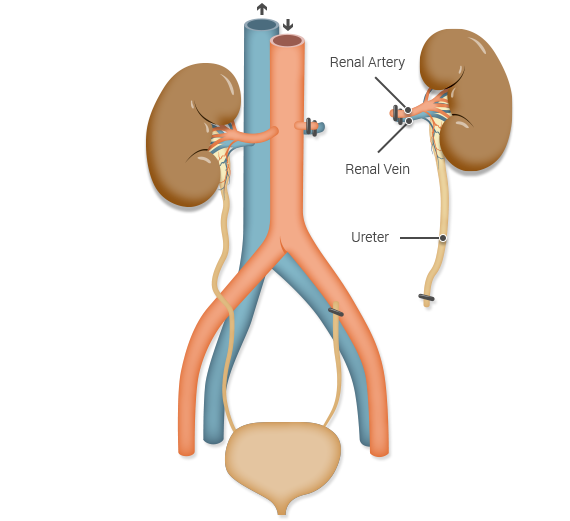Laparoscopy vs. Open Surgery
We prefer to perform a laparoscopic surgery over the traditional open surgery because it’s a minimally-invasive procedure. A laparoscopy consists of three small incisions, or “ports”, that are half the width of a dime (¼-inch) through which we insert a camera and other robotic tools to detach the kidney. Once detached, the kidney can be removed through the bellybutton or a 3” incision below the waistline. On the other hand, an open surgery requires a much larger incision alongside the kidney, which leads to more pain, a longer recovery period, a longer hospital stay, and a more visible scar than with a laparoscopy.







